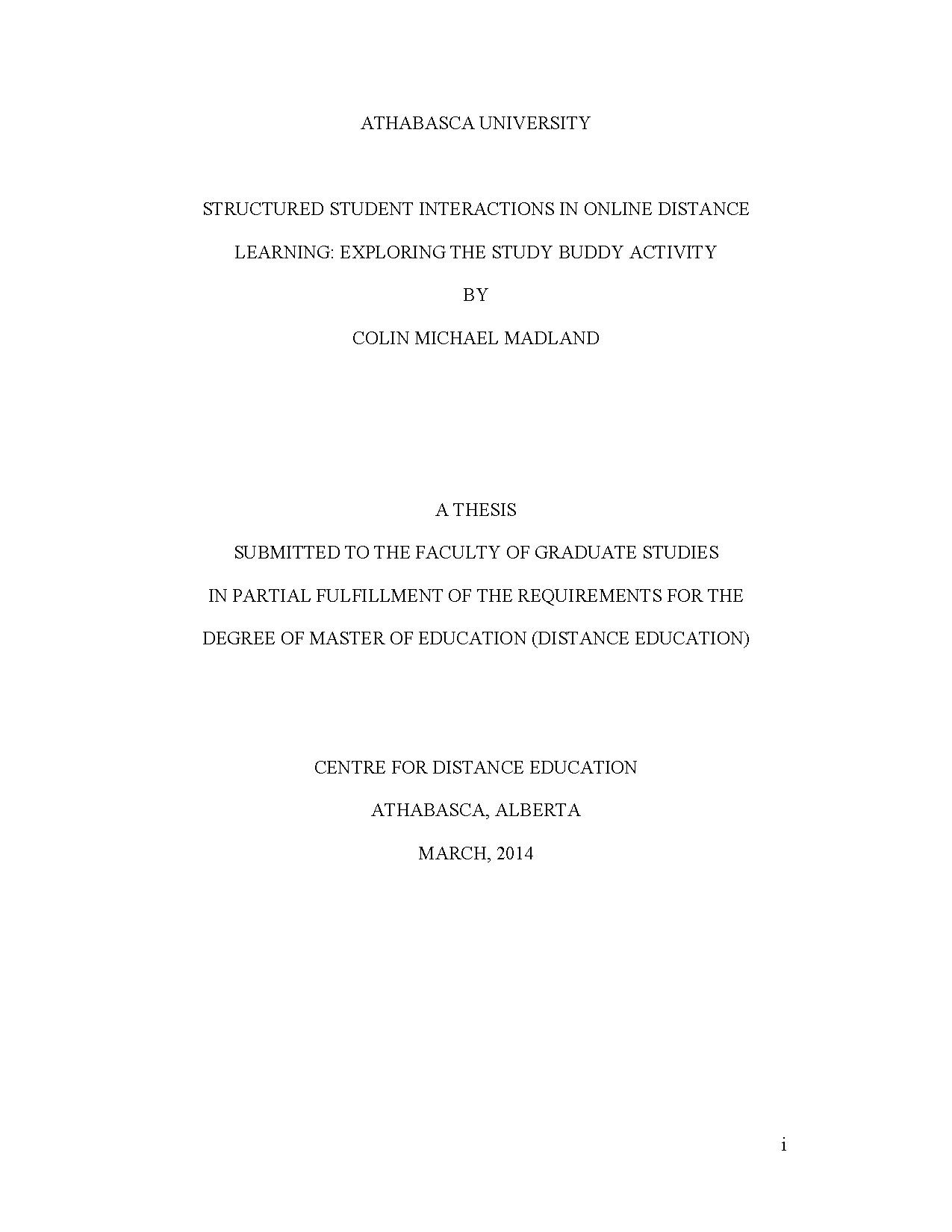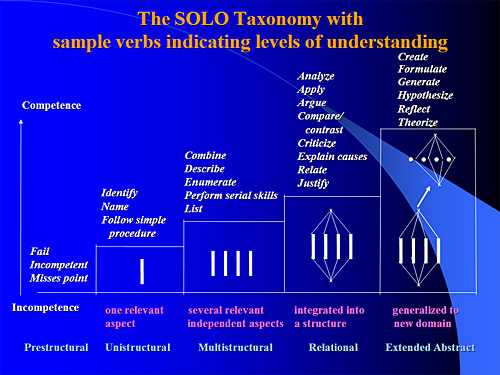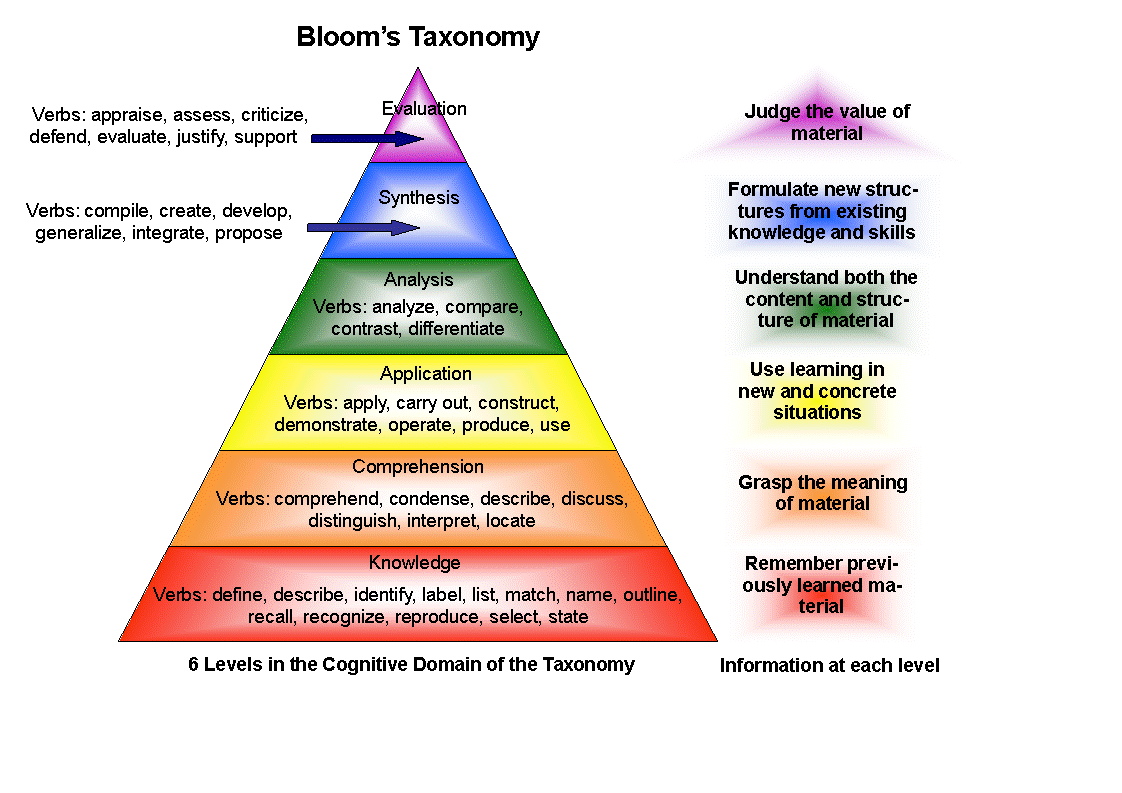Difference between revisions of "OLFM Workshop/Planning/Track 4"
Jump to navigation
Jump to search
ColinMadland (talk | contribs) |
ColinMadland (talk | contribs) |
||
| Line 30: | Line 30: | ||
*http://www.johnbiggs.com.au/wp-content/uploads/2013/01/solo_taxonomy.jpg | *http://www.johnbiggs.com.au/wp-content/uploads/2013/01/solo_taxonomy.jpg | ||
*http://ar.cetl.hku.hk/images/blooms.gif | *http://ar.cetl.hku.hk/images/blooms.gif | ||
| − | *Example activity: Study Buddies | + | *Example activity: brainstorm activities then peer review, then talk about Study Buddies |
Revision as of 13:48, 21 March 2014
Facilitators
Mary Wilson, Fränzi Ng, Loretta Teng, and Colin Madland
Encouraging Deeper Approaches to Learning
Deep: high level cognitive skills used for activities which require them Surface: low-level cognitive skills for tasks which require high level skills.
Guiding Questions
- What do we mean by a student's approach to learning?
- How are approaches to learning different from learning styles?
- What is the 3-P Model of Teaching and Learning and how is it relevant to TRU-OL?
- What should SMEs and designers consider when planning learning activities?
- What should facilitators consider while the course is in progress?
Resources
- Biggs, J., & Tang, C. (2007). Teaching for quality learning at university: What the student does (3rd ed.). New York: Society for Research into Higher Education & Open University Press. Retrieved from http://site.ebrary.com.ezproxy.tru.ca/lib/trulibrary/docDetail.action
- Biggs, J., Kember, D., & Leung, D. Y. P. (2001). The revised two-factor Study Process Questionnaire: R-SPQ-2F. British Journal of Educational Psychology, 71, 133–149. doi:10.1348/000709901158433
- Biggs, J., & Collis, K. (1982). Evaluating the quality of learning: The SOLO taxonomy. New York: Academic Press.
- Madland, C. (2014) Structured Student Interactions in Online Distance Learning: Exploring the study buddy activity. Unpublished master's thesis, Athabasca University

Activities
- The portal is where participants will collaborate and record their learning during the workshop.
- How might this resource be measured with respect to effectiveness and student learning?
- What activities have been shown to promote deeper approaches? (Kanuka, 2005?)
- Divide participants by discipline?
- Health
- Business


- Example activity: brainstorm activities then peer review, then talk about Study Buddies
